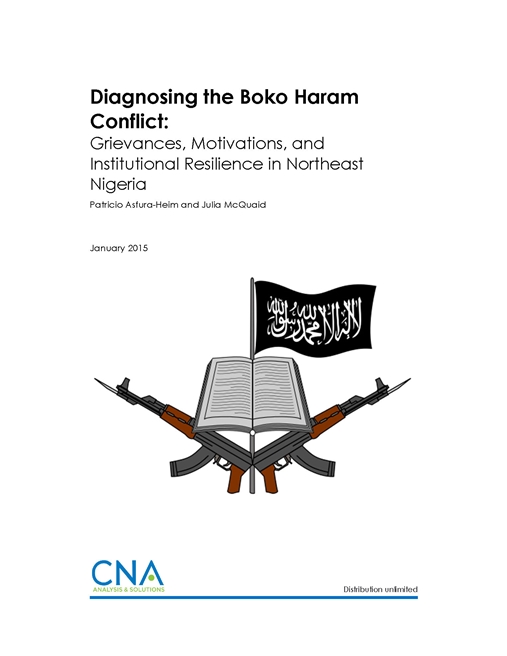Since 2002, the militant group Boko Haram has embarked on a violent insurgent campaign in northeastern Nigeria. The group’s goal is to expel the prevailing political establishment, remove all Western influences, and eventually overthrow the national government and establish an Islamic state in its place. Since 2010, this group has been responsible for more terrorist attacks in Nigeria than all other militant groups combined. In April 2014, the conflict rose to prominence on the international stage after Boko Haram kidnapped 270 schoolgirls from the northern town of Chibok. In the aftermath of the kidnappings, the Government of Nigeria requested assistance from international partners, including the United States, to save the girls. As of the writing of this report, most of the girls are still in captivity.
The United States seeks an end to the Boko Haram conflict for numerous reasons. The U.S. has long viewed Nigeria as a strategically important country whose stability and influence are key factors in U.S. policy and interests in Africa. Nigeria is Africa’s largest economy, its largest producer of oil, and its most populous country. Furthermore, its government is a leading actor in regional politics and an important contributor to peacekeeping operations in Africa. The United States, which designated Boko Haram a Foreign Terrorist Organization (FTO) in November 2013, also has concerns that the group could target its diplomatic and economic interests in Nigeria, and beyond, based on revelations of Boko Haram’s suspected links to Al Qaeda in the Islamic Maghreb (AQIM), and more recently to the Islamic State in Iraq and the Levant (ISIL). U.S. Africa Command officials have suggested that Boko Haram has elements that aspire to a broader level of attacks—not just in Africa, but also in Europe and potentially in the United States.
The conflict in northeast Nigeria is complex. It is driven by a mix of historical, political, economic, and ethnic antagonisms. Resolving it will require a deep understanding of conflict dynamics, as well as the motivations and capabilities of various key actors. To date, few such comprehensive analyses of the Boko Haram conflict have been attempted. As a result, there is still some debate as to exactly what kind of conflict—insurgency, inter-ethnic warfare, opportunistic criminality, or revolutionary terrorism—is actually taking place in northeast Nigeria. In order to develop an effective response to the threat posed by Boko Haram, the Nigerian government and its international partners must properly diagnose the conflict and comprehend it as an evolving system that can be affected through targeted interventions.
The intent of this report is to provide the appropriate type of information—at the appropriate level of granularity—in order to inform U.S. government efforts to develop more effective approaches to countering Boko Haram. The goal is to help U.S. planners and decision-makers understand the conflict as an interconnected system and, eventually, to develop targeted, conflict-sensitive strategies for assisting the Nigerian government. Specifically, this report seeks to diagnose and dissect the conflict by identifying relevant political, economic, social, and security factors at work in northeast Nigeria, by analyzing how key actors mobilize grievances and institutional resiliencies to drive or mitigate conflict, and by forecasting how conflict dynamics might evolve in the future.
To achieve this, we conducted a conflict assessment, which is an analytical process undertaken to identify and understand the dynamics of violence and instability, and to develop an independent, objective view of a conflict. Conflict assessments uncover the crucial elements of armed conflicts and identify how they interact, in order to assist U.S. government planners in the development of programs that can most effectively support host nation efforts to manage conflicts. Conflict assessments also help ensure that assistance programs are more “conflict sensitive”—that is, to make sure their impact is the intended one.
Download reportDistribution unlimited
Details
- Pages: 90
- Document Number: DOP-2014-U-009272-final
- Publication Date: 1/9/2015
